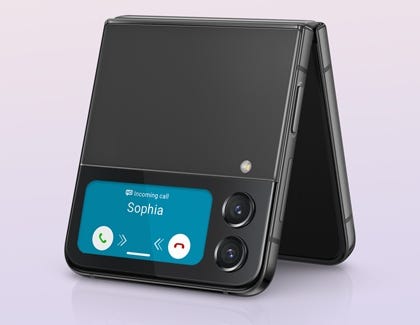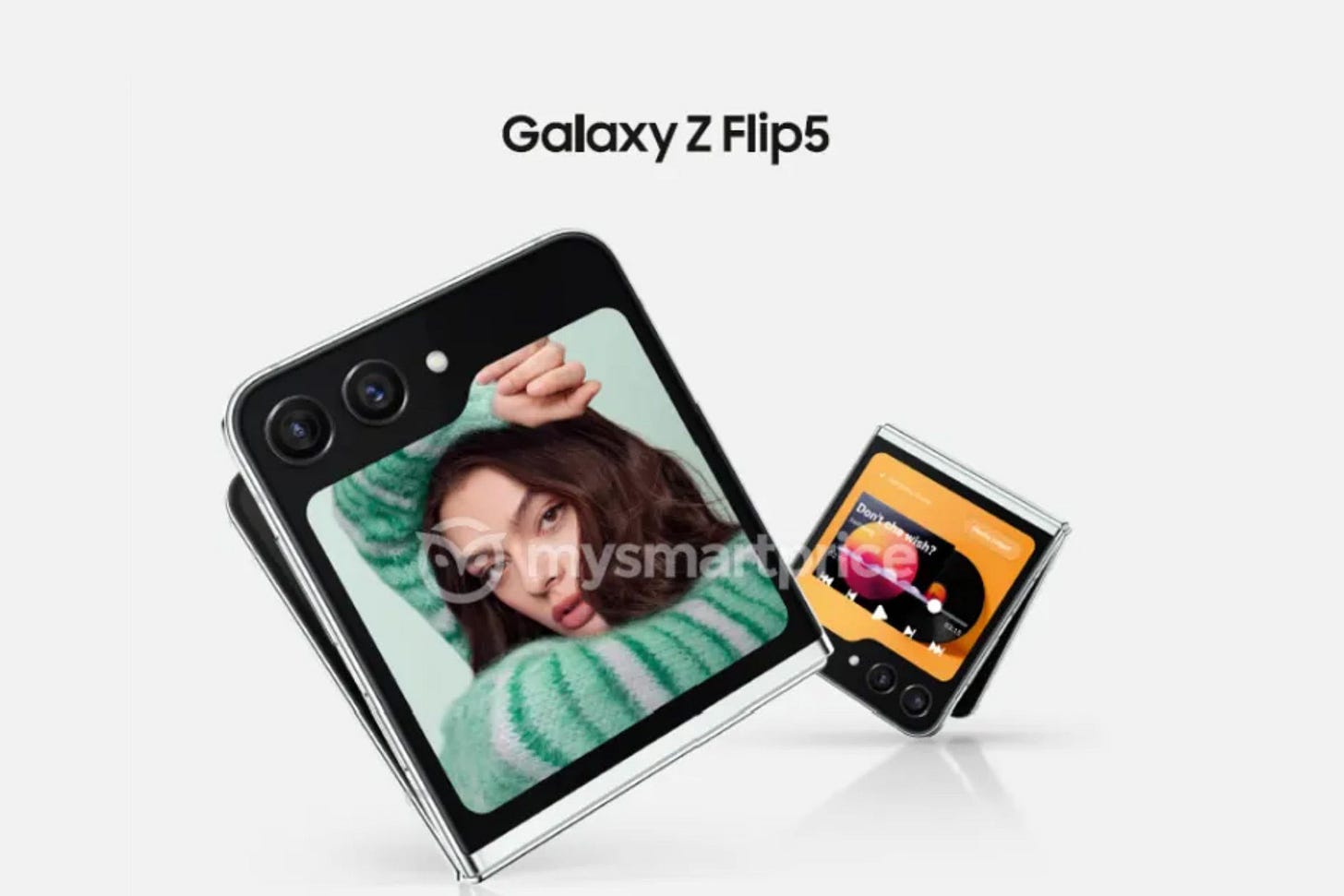should flip phones have large cover screens?
flip phones are slowly becoming small folding phones...is that really a good thing?
🍭 short and sweet
Flip phones have been slowly adopting bigger and bigger cover screens
While smaller cover screens can help reduce screen usage, bigger cover screens let users use the phone without opening it
Even though the older Galaxy Z Flip1 had a really tiny and practically useless cover display2, it had something going for it: The fact that it had to be unfolded before it could be used created a small barrier that could be just enough to keep people from using their phones unless necessary.
For the sake of digital health, this could actually be useful for a lot of users since many people nowadays tend to spend a bit too much time on their phones.
The Z Flip3 eventually increased the size of the cover screen to make it actually useful, but it did so in a way that still helped prevent impulsive usage since it was still too small to use actual apps.
But with the new Motorola RAZR+ and the upcoming Galaxy Z Flip53 adopting even bigger cover screens that let people use their apps without having to open the phone first, I think it’s time to ask the question:
Are cover screens getting TOO big?
Why exactly are small screens useful?
Not only does the physical act of having to unfold the phone discourage people from impulsive usage, but the usefulness of a cover screen eliminates all kinds of reasons for wanting to unfold the phone in the first place.
I mentioned earlier that the small cover screens on earlier flip phones helped some people limit the amount of time they spent on them.
There’s good reason for this.
Cover screens don’t usually have a lot of features attached to them. Typically, they have features like…
Clock
Phone
Digital payments
Widgets
Notifications
Camera
Quick settings (flashlight, Wi-Fi, Bluetooth, silent mode, etc.)
In other words, they can only do the bare essentials. But you can do all of this without needing to open the phone in the first place.

Social media has created a major issue where people check their phones very often for notifications, new posts, etc. This ends up in people intending to spend seconds checking them but end up spending several minutes (or even hours!) scrolling through their feeds.
Not only does the physical act of having to unfold the phone discourage people from impulsive usage, but the usefulness of a cover screen eliminates all kinds of reasons for wanting to unfold the phone in the first place.
This is one of the biggest benefits that has been reiterated by many reviewers over the years, and it remains one of the big selling points of a phone like this.
Big screens are useful too
Flip phones just don’t have this level of capability when folded. And folding phones are beyond most people’s budget.
But even though small screens have proven useful in this regard, their biggest upside is also their biggest downside.
Small screens limit usage, and they have proven useful in some regards—that is definitely true—but they’re not as useful as people would like. They show the time and notifications and let users change some settings. But that’s about it.
I have seen so many people voice their concerns about the size of cover displays and how they wish they could actually use their phone without having to open it first.
But…isn’t that why small phones were useful in the first place? Why are people clamoring for bigger cover displays when that would kinda ruin the point of a small one?
Simple. Folding phones.

One of the hallmark features of a full-size folding phone is that it’s a tablet when you need it and a “regular-size” phone when you don’t. In other words, the cover display on a phone like this is the size of a typical smartphone, which means that it’s still useful when closed.
Flip phones just don’t have this level of capability when folded. And full-sized folding phones are beyond most people’s budget.
A lot of people seem to see the potential of flip phones as folding phone alternatives, and they’re often looked at as the more interesting and affordable option.
For most people, a bigger cover screen on smaller phones like these would just be so much more useful.
So…are they getting too big?
[Newer-style flip phones] create a proper midpoint between older flip phones and full-size folding phones.
All of that being said, I wouldn’t say cover screens are “too big".
Rather, I think that flip phones are starting to find their place.
Small cover screens made flip phones the ones to buy if you wanted to use your phone less. But I don’t think they were ever really made with this intention.
Bigger folding phones were the option for deep-pocketed people who wanted to up their productivity game. But most people do not have pockets deep enough to afford one.
That’s where “modern” flip phones come into play…They create a proper midpoint between older flip phones and full-size folding phones.
The phone may not have the full productivity capabilities of a folding phone, but just like how they are basically small tablets that can be used like a phone, flip phones are becoming big phones you can use like a tiny one.
Not everything you do needs to be done on a large screen, and the tiny screen can discourage people from impulsively using apps where large screens would benefit them more (e.g. Youtube).
So even though cover screens are getting bigger, they can still accomplish their intended purpose while also providing more utility. Flip phones have always been the more “interesting” version of a folding phone, and with cover screens becoming more useful, they could end up becoming the standard option for anyone considering switching away from traditional smartphones.
This week’s question…
Do you prefer small cover screens or big ones? Should flip phones be capable of running full Android apps, or should there be some limitations to encourage moderation?
Leave a comment and let me know your thoughts!
Anyway, just wanted to share that with you guys. Thanks for joining me, and I’ll see you all around! Adios! 👋
→ Austin from nexgen
Read next
pixel 8 pro has an intriguing new feature
This article is based on rumors and leaks. Take everything you read with a grain of salt as nothing is 100% confirmed.
Samsung’s first attempt at an affordable folding phone. Unlike other full-sized folding phones that were essentially small tablets, the Z Flip was a large phone that could fold down into a smaller, square-shaped package.
Folding phones tend to have two displays: a smaller on on the outside when folded and a bigger one on the inside when unfolded. The cover display is the smaller display on the outside.
The fourth generation of the Z Flip (Samsung skipped the Z Flip2 naming to keep the names consistent between the Z Fold and the Z Flip)










Great points! I agree that newer flip phones are likely where we'll see them gain a foothold in the tech landscape. Personally though, id love to see an option one day for a flip phone with no outer screen at all! Sometimes its nice to fully put a phone away, and especially if paired with a wearable this kind of flip phone would be my dream!